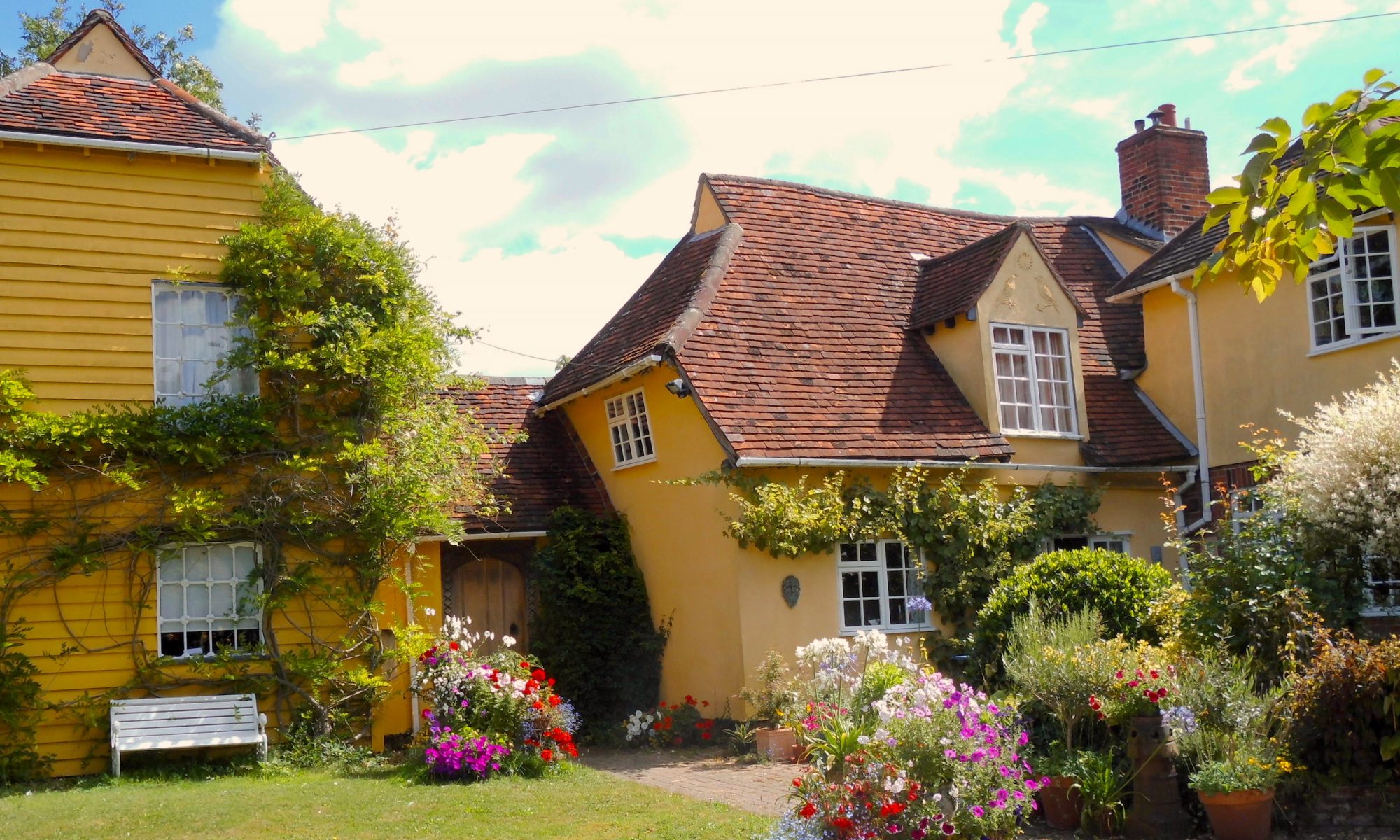
People have been choosing to live in Alphamstone for a very long time. This isn’t really surprising to us, who love it well, but apparently it was already special in the Bronze Age; the church is built on a barrow or tumulus which excavations in the early twentieth century dated to about 1500 BC. A sacred well was discovered then, and three fine cinerary urns which are now in Colchester Museum. Even more significant are the boulders around the churchyard, perhaps the remains of a stone circle and evidence of ritual importance. These sarsen (meaning ‘alien’ or ‘heathen’) stones were probably deposited by glaciers at the end of the last ice-age, although popular folklore holds that they were dug out of Wiltshire or Dorset downland, brought perhaps hundreds of miles by unreliable transport on rough tracks, and literally manhandled into place, all with the most primitive tools. Whichever explanation you choose, there are a number of them in the churchyard and around the village; you can even see one in our garden near the bird table.
At the time of the Domesday Book, ‘Alfelmestuna ‘ was a tiny manor of only 55 acres. Later the name became variously Alpheston, Elfhelmstun, and even Ulverston in common parlance, but however you spell it, the meaning’s the same – in Anglo-Saxon a ‘tun’ is an enclosure or a village, so this is Elfhelm’s settlement. By 1316, the FitzGeoffrey family owned the land, and the manor had expanded to 224 acres. A tithe map of 1257 shows the first reference we’ve found to William Ancel, whose name suggests the source of our house’s title to this day. Ancel had a deer park and grove which are shown on this map too, so although it wasn’t a large manor it must have been well able to provide for its family, labourers and farmers. You might see some deer in or around the garden during your stay, though nowadays these are more likely to be little muntjacs than descendants of the original herd.
Ansells Farm now must be very different from in those earlier times. The oldest part of the house today is the Tudor oak-beamed kitchen with its brick floor. This is the heart of the house, cosy, welcoming and redolent with the scent of baking; it’s where our guests enjoy breakfast at a long, polished wood table. As recently as 150 years ago, we know that two families shared the house and partitioned the kitchen; when we bought the derelict house the dividing wall made of elm coffin-boards was still in place! Maybe the local undertaker sold them a job lot…
The front part of the house was added in 1800, when the owner had a little spare money and decided the rooms should be squarer and a bit more elegant. In 1840 Edward Kemp owned Ancells (sic), and his tenant Daniel Podd farmed about 75 acres. Our little meadow, then called Grass Moor, is the only piece of land which is still part of the Ansells picture today; it hasn’t been a working farm for fifty years or more. We built the most recent extension when we moved here in 1977 with a toddler daughter and began the job of coaxing the house back to life. Nearly forty years and a whole family later, it’s in this new “wing” that our two guest-rooms and their private bathroom and separate WC are situated, as well as the beautiful marble-floored music-room with its grand piano and walls of bookshelves. Stephen is a professional singer and teacher of international repute, and music is a very important part of our lives. Guests are welcome to borrow books to read during their stay, and to use the piano when convenient.
Outside, instead of the tangle of brambles, nettles and broken buckets we inherited with the house, Ansells is now surrounded by a mature garden, full of flowering shrubs, shady trees and hidden places to retreat to with a book. At the back the house looks over fields, and you can simply stroll out of the garden into open countryside. As for the tiny lane that runs in front of the house, it’s quite an event if a tractor or car comes past! There are lovely walks for all abilities nearby, and the historic towns of Colchester, Bury St. Edmunds, Cambridge and Saffron Walden are within easy reach. Sudbury (birthplace of Thomas Gainsborough), the attractions of Constable Country, the Stour Valley and the mediaeval wool villages of Lavenham and Long Melford are almost on the doorstep.
Alphamstone is only less than two hours’ drive from London, but it is another world – one where peace and quiet and a sense of natural beauty are values we live by.
